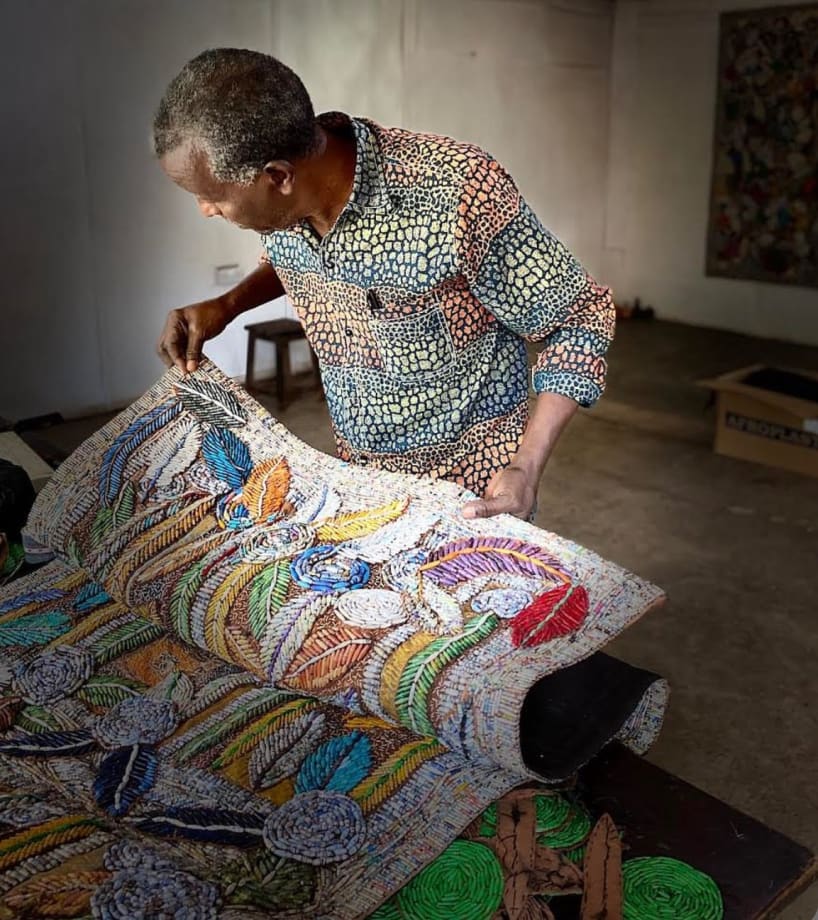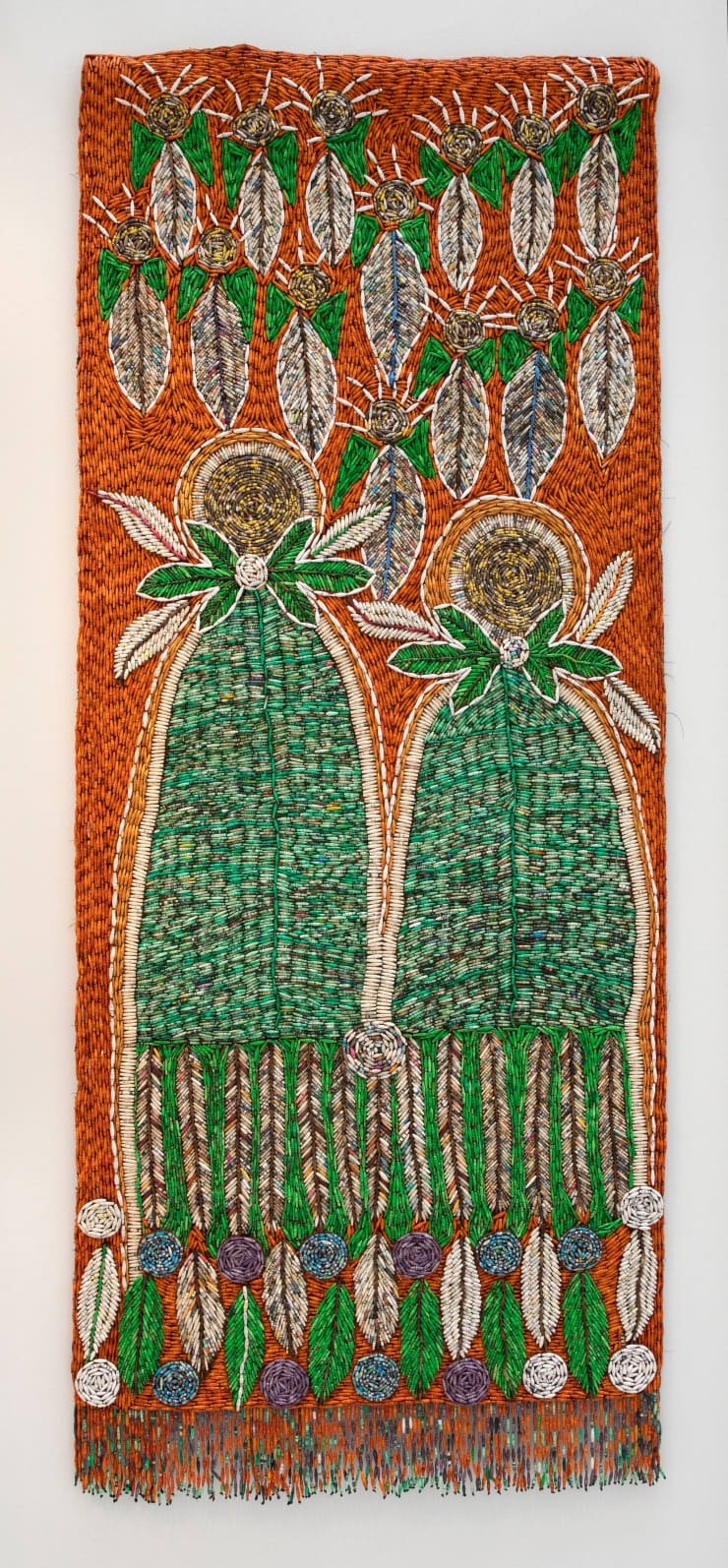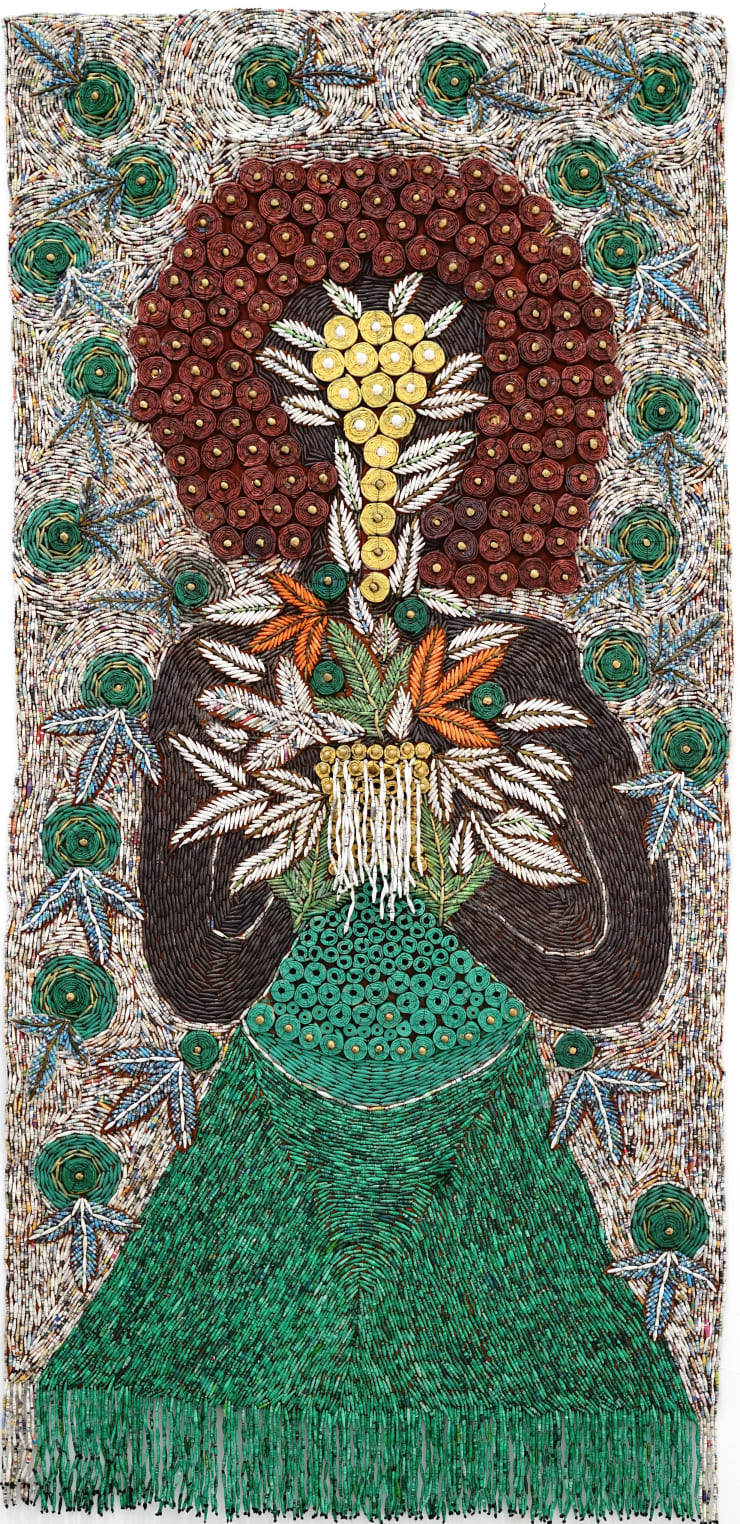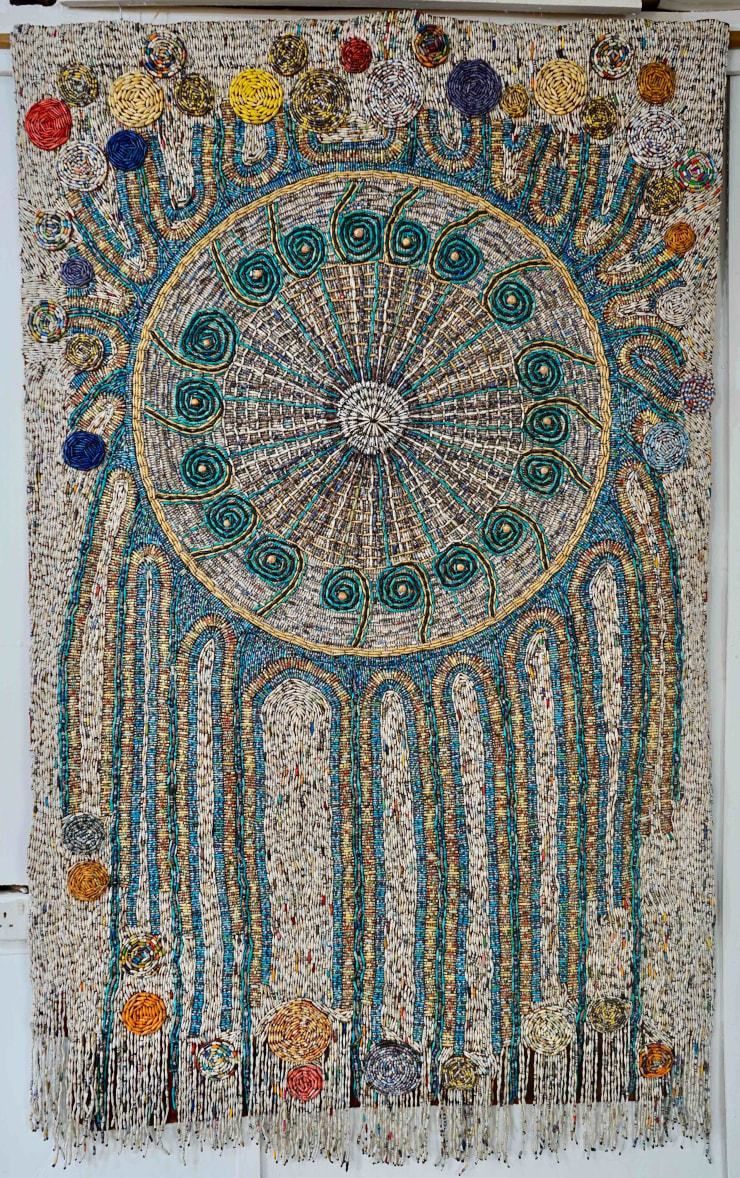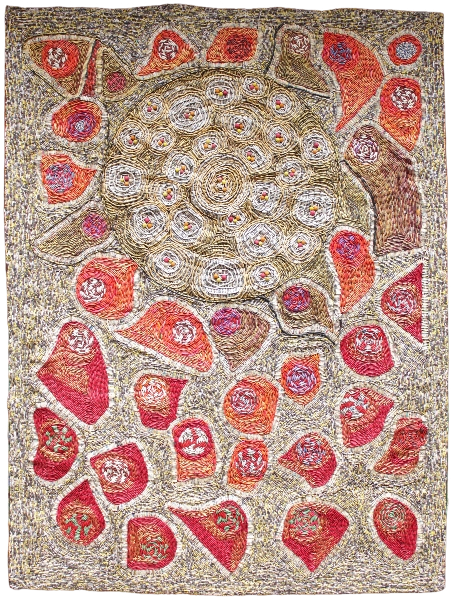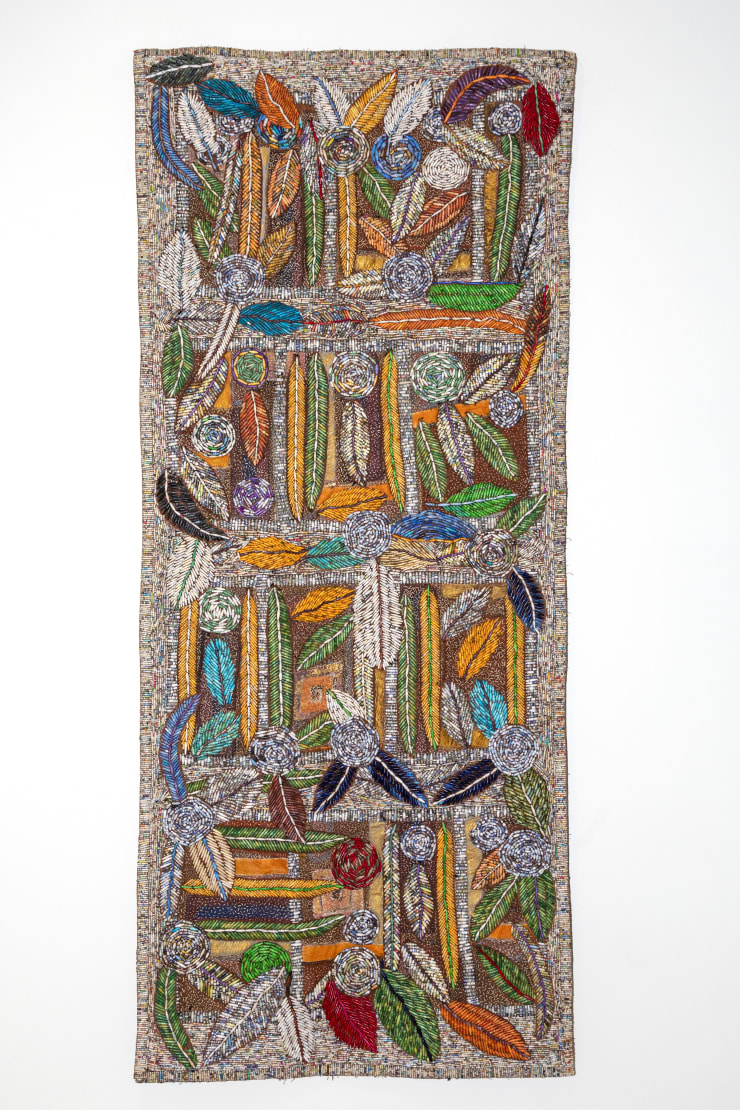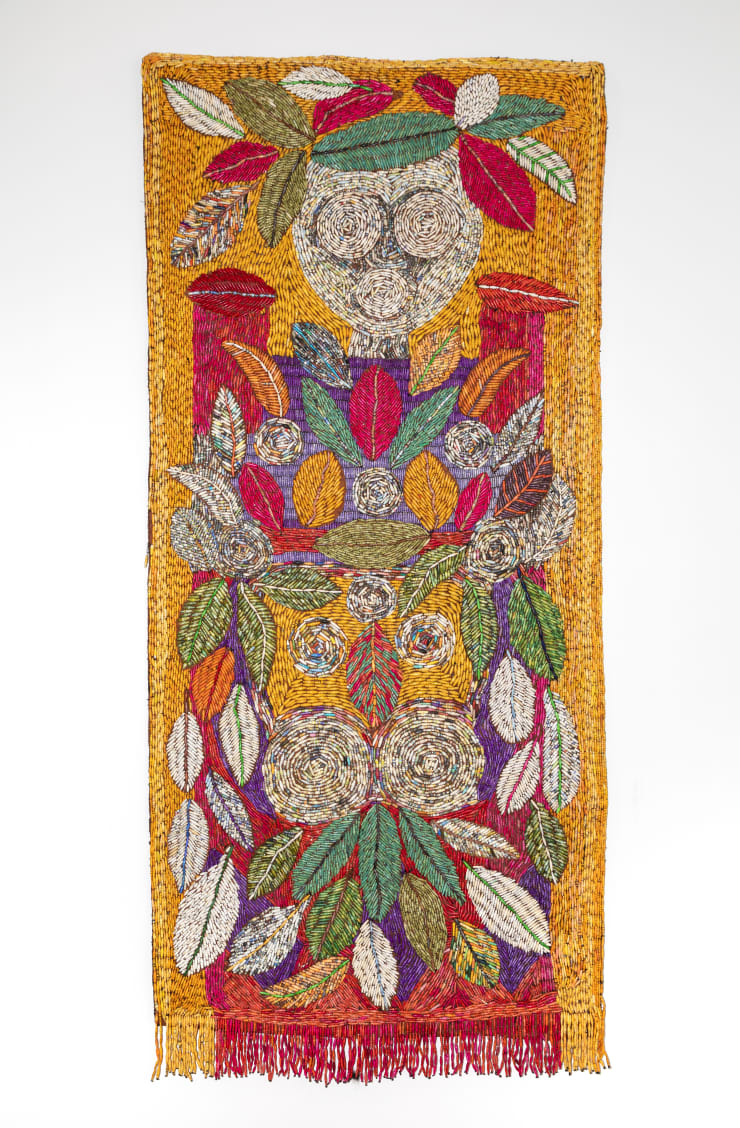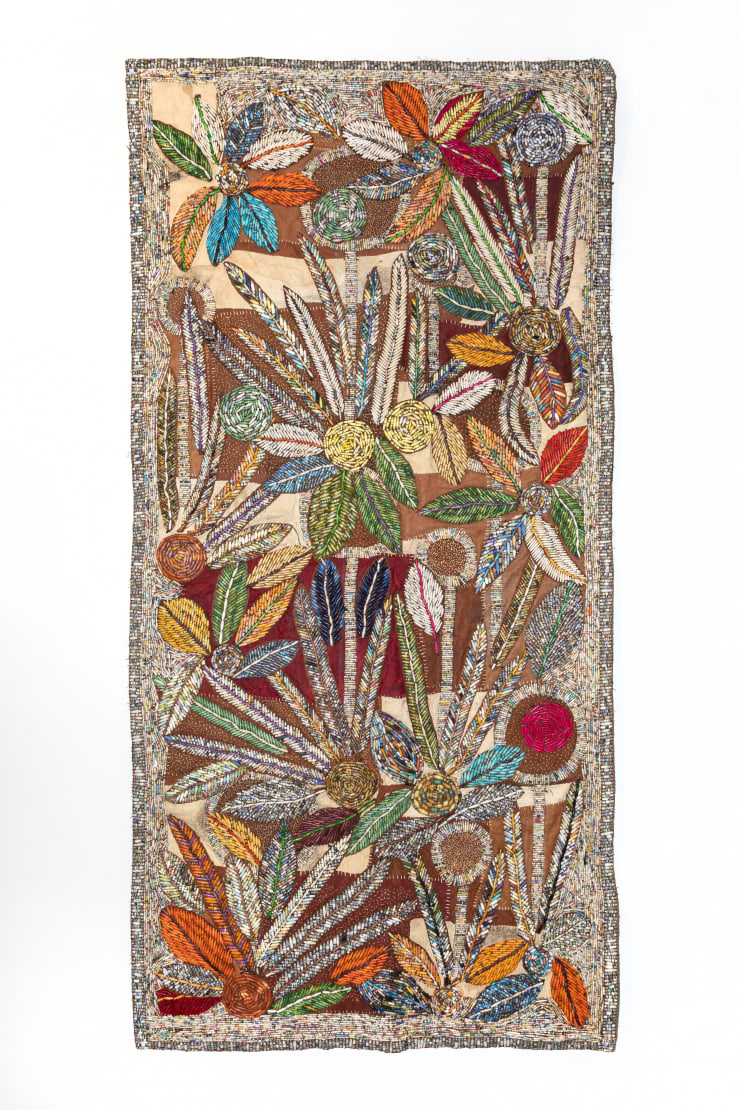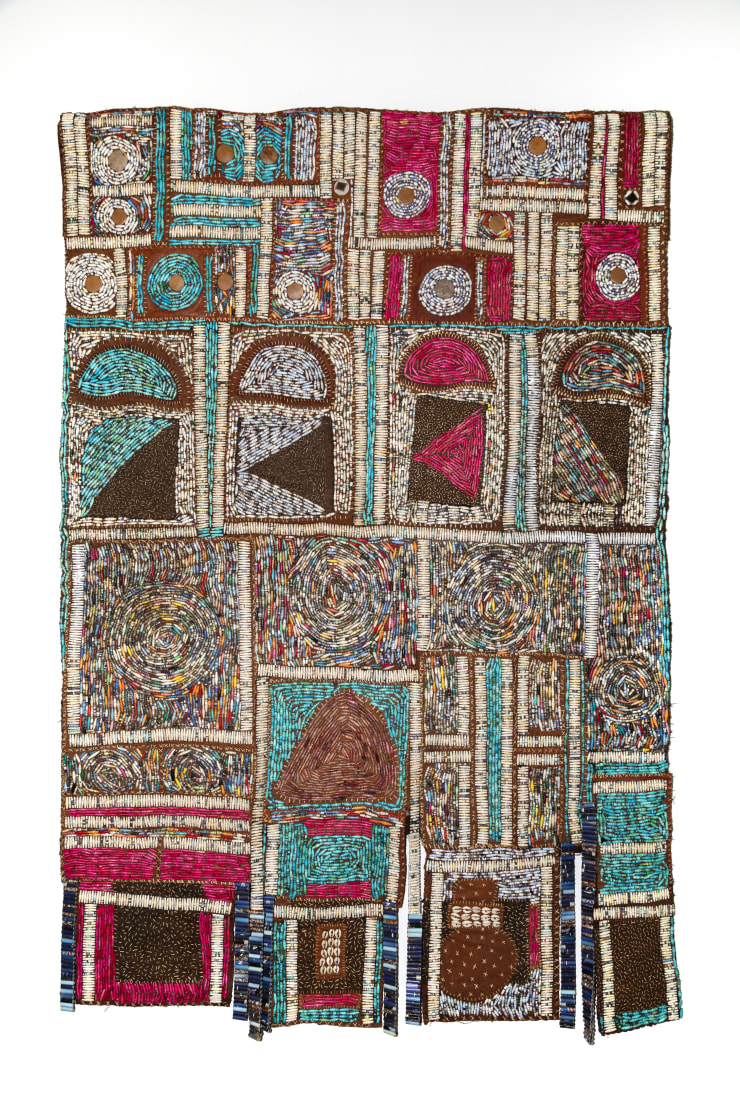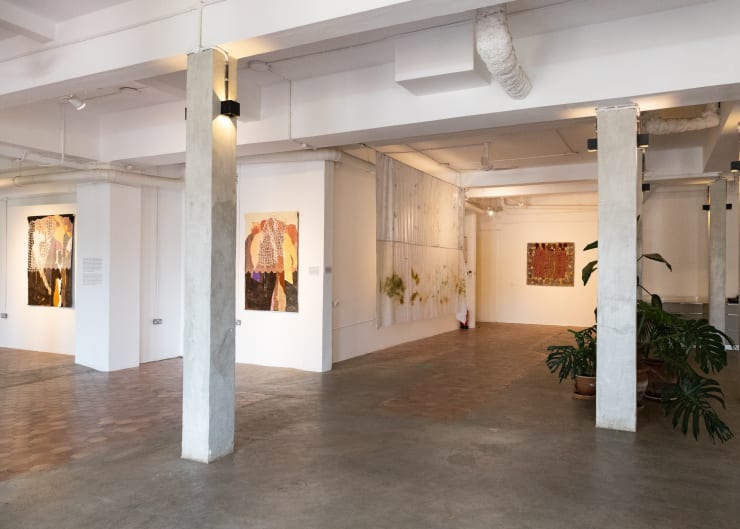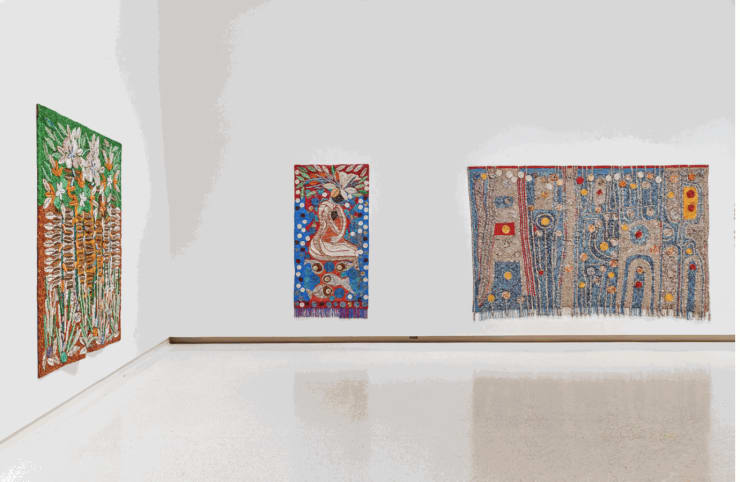Sanaa Gateja Ugandan , b. 1950
Biography
The artist works systematically with women of the communities around his Kampala and countryside studios, which is an important part of his process which he wants to be sustainable in social and environmental terms. His concrete engagement with local craftsmanship, waste transformation and community cohesion makes his work politically engaged as well as an attempt to representative of traditional East African values.
His soft sculptures are composed of hundreds of paper beads that are stitched one by one onto bark cloth- a traditional fabric that is made from the bark of an East African ficus tree- composing lush tableaux that have a haptic quality.
The beads are made and tinted by hand from paper that the artist reclaims from newspapers, magazines, pamphlets, etc. . The information each bead carries, words and images, are literally crushed, although deformed letters emerge when one gets close enough to the work, evoking a mysterious, undecipherable language- or how the constant information we are submitted to finally creates an indifferent ‘white noise’.
Yet the main narrative is constructed by the artist who masterfully manipulates the placement and juxtaposition of the beads, applying painting upon them in parts. The abstract or more recognisable motifs he creates are animated in an orchestrated movement, alternating solidity and fluidity, vibration and calm to serve the themes that interest him, would they be colonial taxonomy, vernacular architecture, or traditional and contemporary philosophies of nature.
The artist works systematically with women of the communities around his Kampala and countryside studios, which is an important part of his process which he wants to be sustainable in social and environmental terms. His concrete engagement with local craftsmanship, waste transformation and community cohesion makes his work politically engaged as well as an attempt to representative of traditional East African values.
Gateja left Uganda’s civil war and lived afterwards in Kenya, then leaving again to Italy, and the UK -where he studied Fine Art and Design. He came back to Kampala only in the late 1990s. His work is permanently on display at the National Museums in Uganda and Kenya. It was exhibited among other places in the Cairo International Biennial; Museum of Art and Design, New York; Biennale Gwangju, Korea; Mbari Institute, Washington DC; African Centre, London.
Works
Art Fairs
-
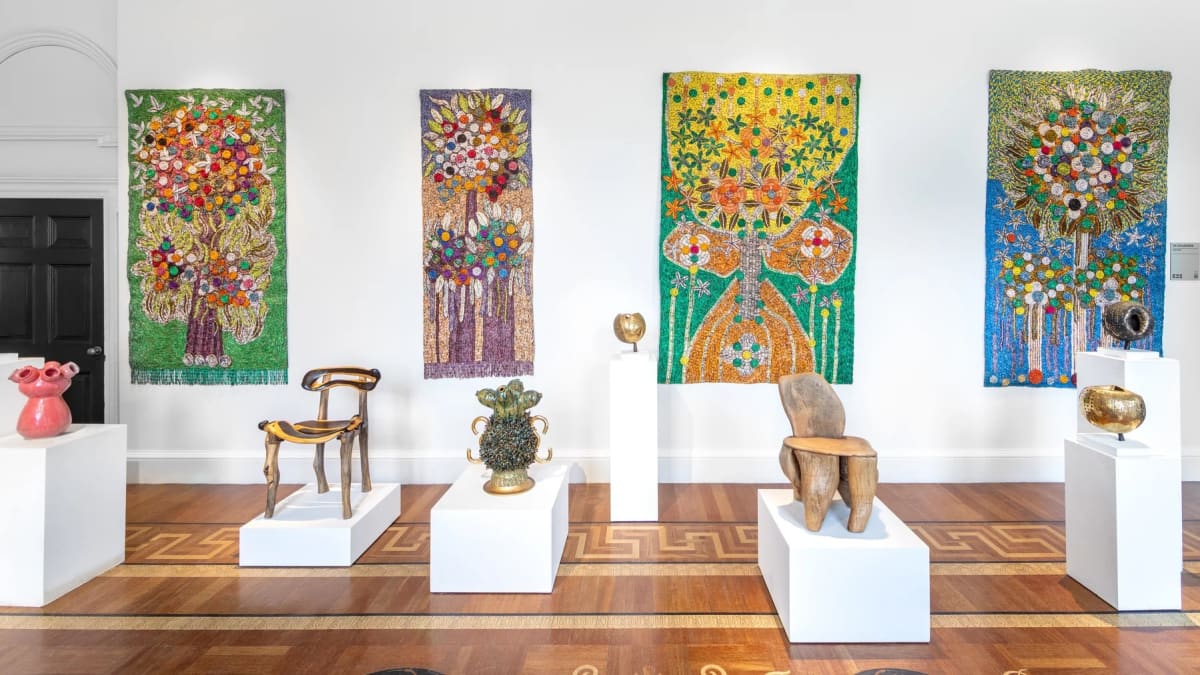
COLLECT ART FAIR, 2023
Sanaa Gateja, Mbaye Babacar Diouf, Balla Niang 3 - 5 Mar 2023Read more -
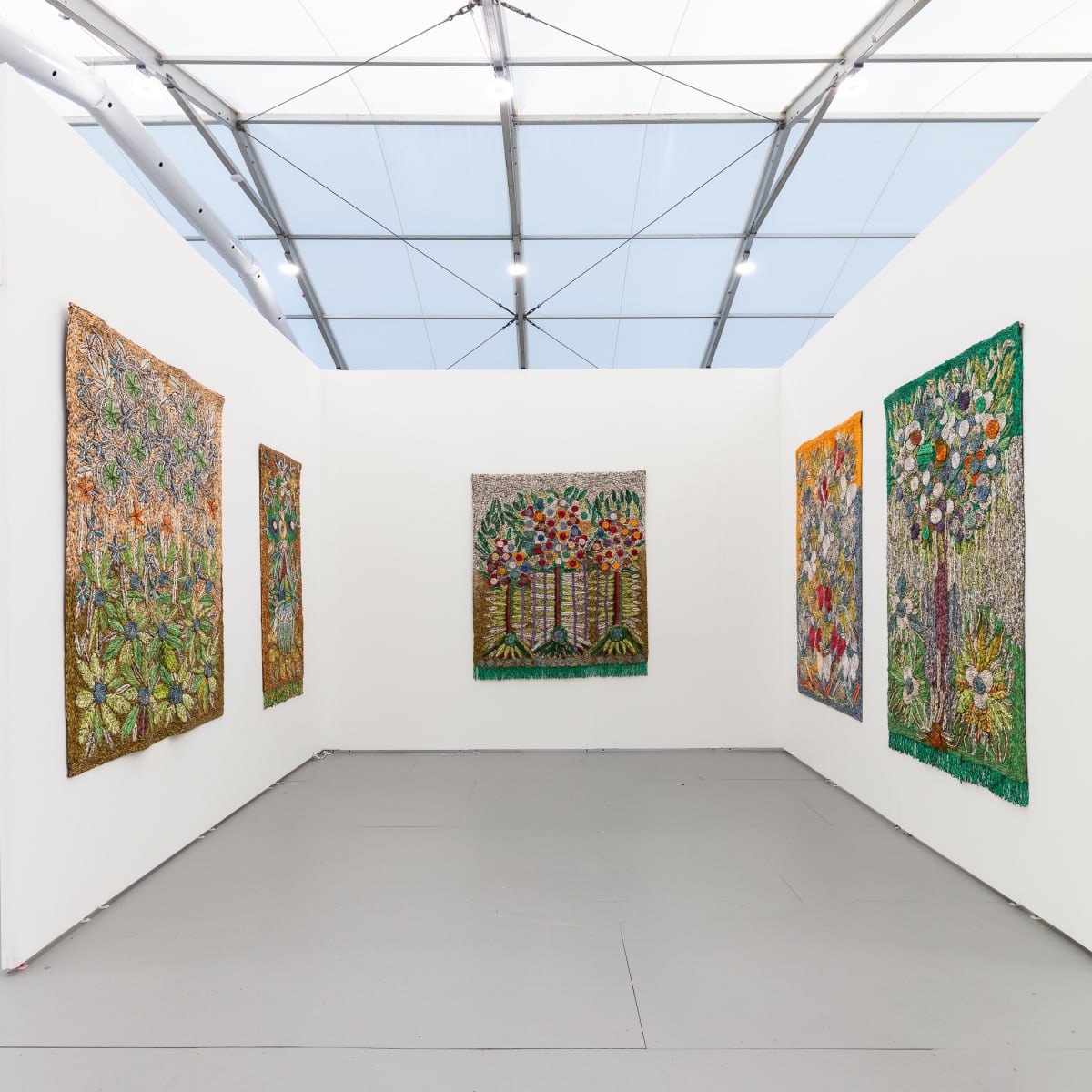
Untitled Art, Miami Beach 2022
SOLO, Sanaa Gateja 28 Nov - 1 Dec 2022Read more -
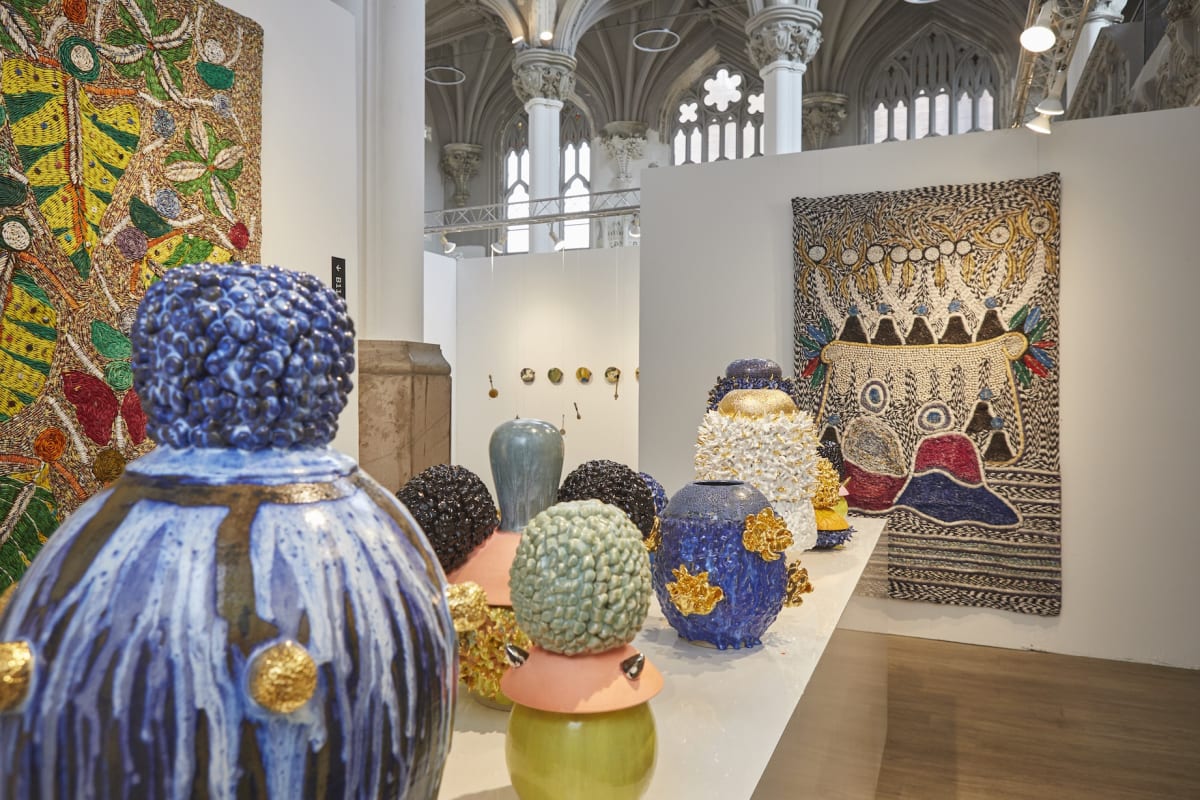
1-54 Contemporary African Art Fair, NYC 2022
Sanaa Gateja, King Houndekpinkou 19 - 25 May 202250 Golborne Gallery is pleased to return this year to 1-54 New York and present new works by Ugandan artist Sanaa Gateja, and Beninese-French artist, King Houndekpinkou.Read more -
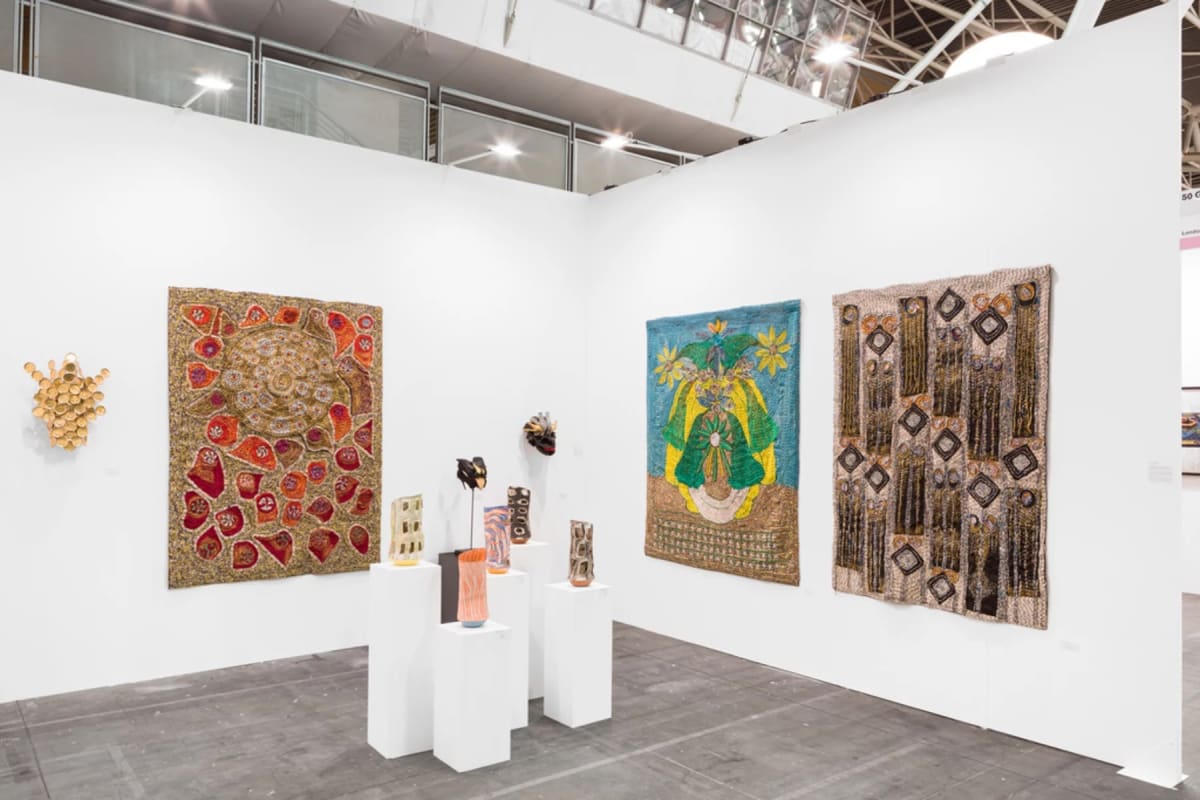
Artissima Art Fair, Turin 2021
Willie Cole, Safaa Erruas, Sanaa Gateja, Emo de Medeiros, Ranti Bam 5 - 7 Nov 2021Read more -
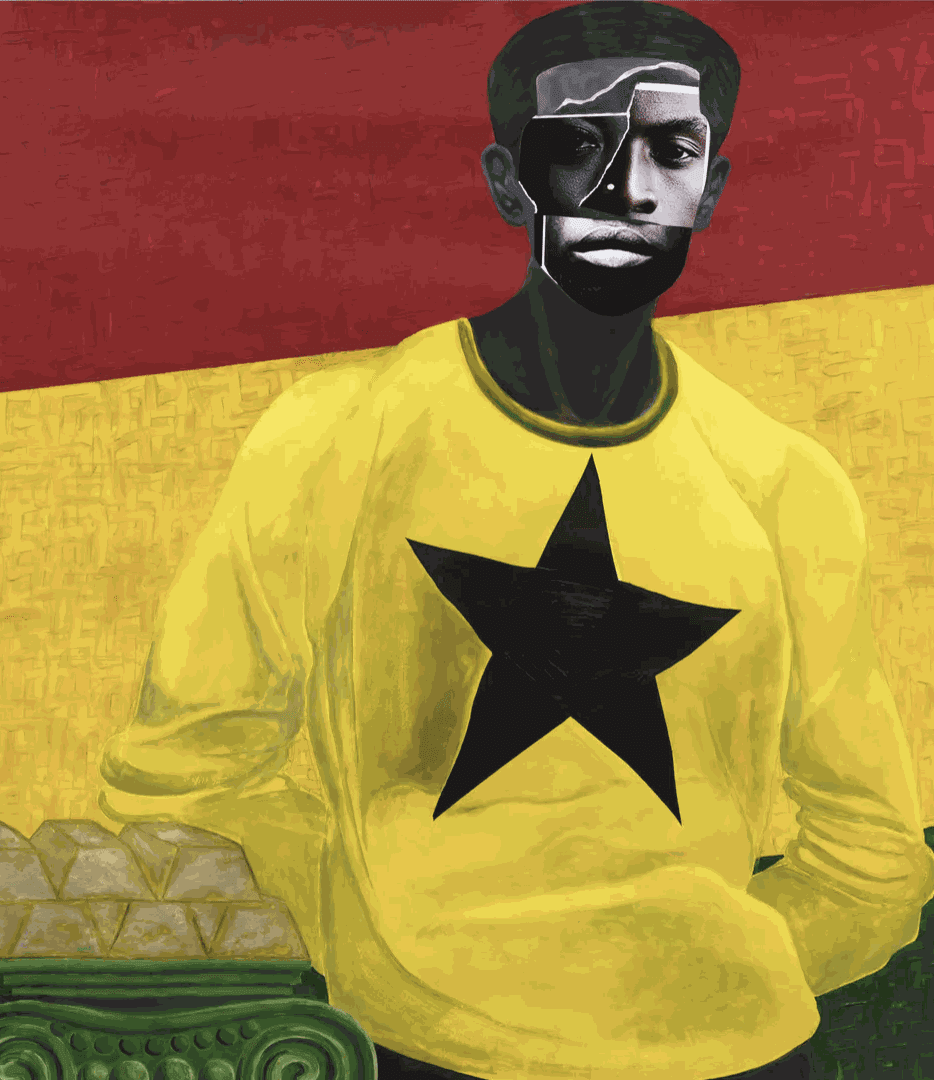
1-54 Contemporary African Art fair, London 2021
Larry Amponsah, Sanaa Gateja, Emo de Medeiros, Safaa Erruas 14 - 17 Oct 2021Read more -
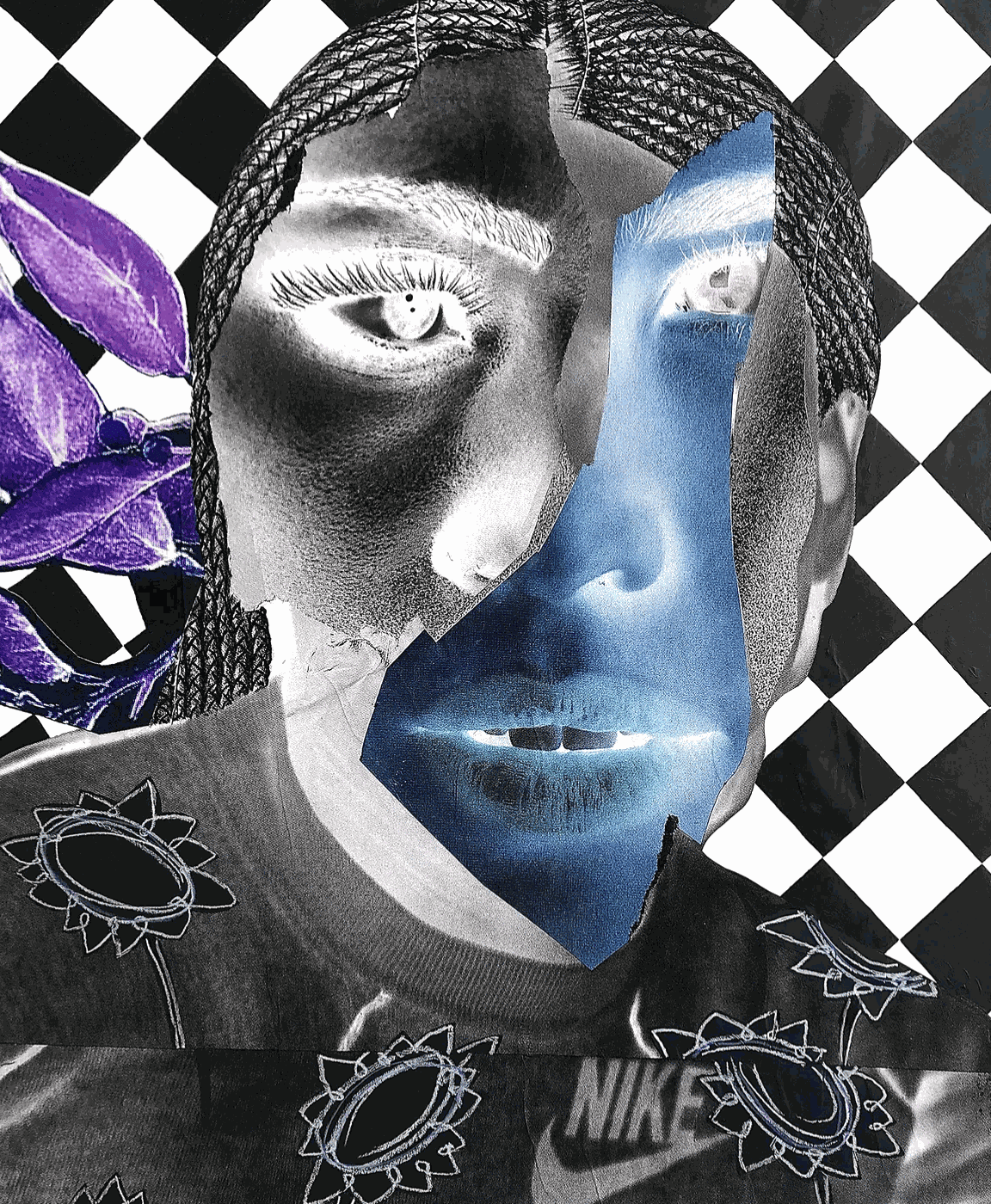
1-54 Contemporary Art Fair, NY 2021
Larry Amponsah, Emo de Medeiros, Sanaa Gateja, Willie Cole 17 - 23 May 2021Read more -
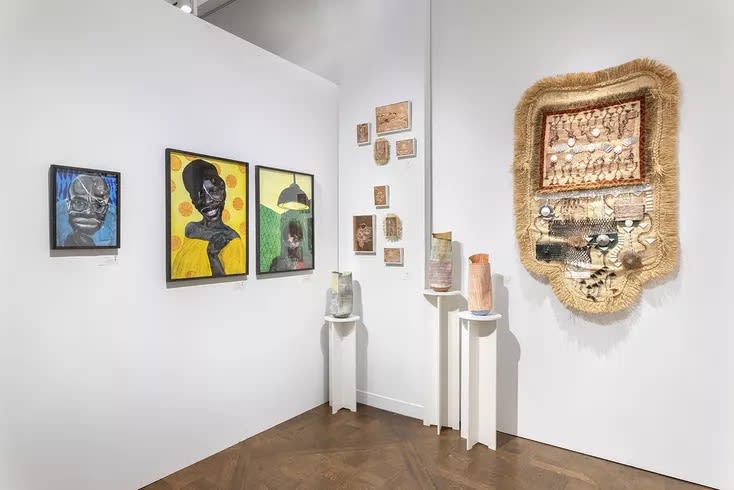
1-54 Contemporary African Art Fair, Paris 2021
Marie-Claire Messouma Manlanbien, Emo de Mederios, Sanaa Gateja, Ranti Bam, Larry Amponsah 20 - 23 Jan 2021Read more -
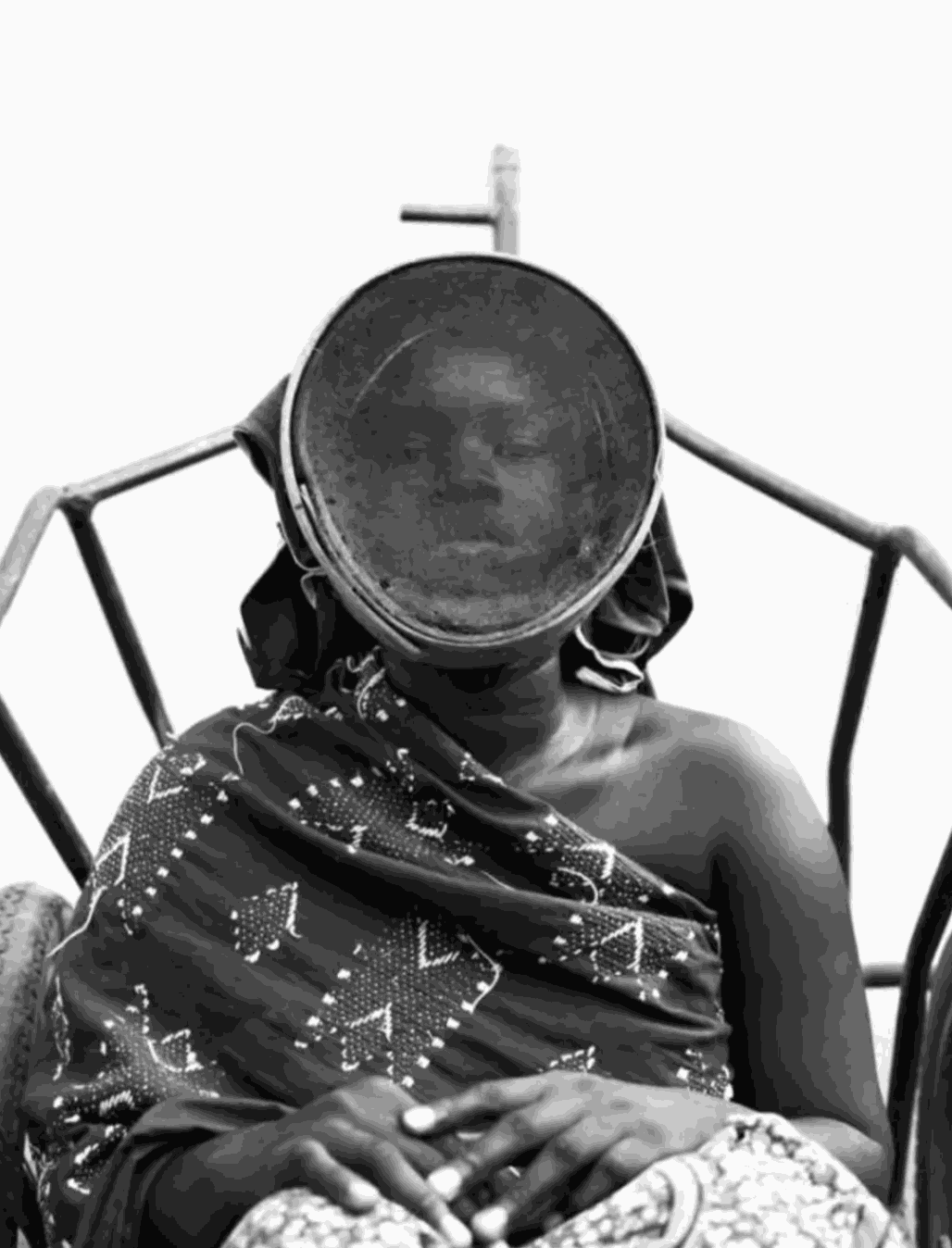
Artissima Art Fair, Turin 2020
Fatoumata Diabaté, Sanaa Gateja, Safaa Erruas, Willie Cole, Larry Amponsah 3 - 5 Nov 2020Read more
Exhibitions
-

It Resonates
Nine Artists From across Africa examined through the lens of 'Resonance' 14 Sep - 4 Oct 2025'It Resonates" assembles the works of nine artists of African origin around the notion of resonance a concept developed by German philosopher Hartmut Rosa, in the context of climate change and environmental degradation.Read more
The exhibition includes the Ugandan artists: Sanaa Gateja, who presents lush tapestries celebrating East African nature and culture; Joseph Ntensibe, represented by a rare landscape painting; and Collin Sekajugo. with brand new mixed- media works.
Also included are a series of Inks on Paper, and two installations by Moroccan artist Safaa Erruas. Temandrota, based in Madagascar, contributes his distinctive semi-abstractions made with earth sap, sisal, combined with acrylic on hand-made paper.
The presentation is completed by paintings from Nairobi -based artists: Chemu Ng'ok and Martin Jakaila- the latter show shown for the first time by an international gallery, alongside a sound piece by fellow Nairobian Joseph Kamaru. -

King Houndekpinkou and Sanaa Gateja at Salon 50 GOLBORNE/ St Sulpice
26 Feb - 2 Mar 2021The exhibition is set in a Parisian apartment located on the Place St Sulpice in the St Germain des Pres area. It sets a dialogue between Gateja's tactile tableaux and Houndekpinkou's ceramics in a domestic decor conceived by architect Andrea Marcante.Read more
News
